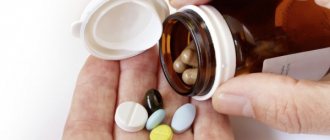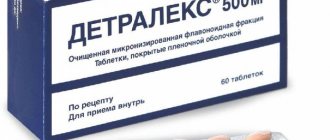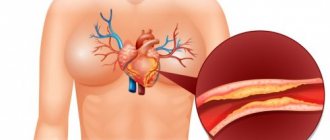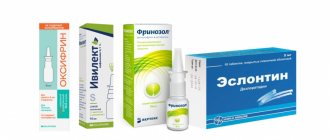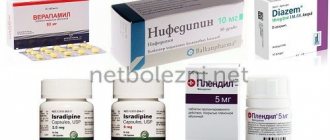A definition of the vasodilating effect is given, its classification according to the mechanism of development, and drugs representing these mechanisms of action are described.
Vasodilating effect is the effect of expanding the lumen of blood vessels. Vessels can be expanded throughout the body (general effect) and locally in a limited area (local effect).
You can cause this effect:
- Physical factor (heat, UV radiation, remember physiotherapy).
- Mechanical action - this is what the effect of massage is based on.
- Physiologically during physical activity, eating, mental work.
- Chemical substance – irritating effect of reagents and allergens locally.
- For any local or general inflammatory reaction.
- Under the influence of hypnosis and trance.
Thus, this is a local or general reaction of the body in the form of vasodilation to various influences, including taking medication.
Medicine "Vazonit"
It is a long-acting (prolonged) action medicine. Pentoxifylline is an active substance that contains 600 mg in one dosage form. Thanks to taking the drug "Vazonit 600":
- microcirculation improves in places where blood flow is disrupted;
- due to the effect on deformed red blood cells, blood fluidity improves;
- the elasticity of the red blood cell membrane increases;
- increased blood viscosity decreases;
- platelet aggregation is blocked.
The drug is completely absorbed from the gastrointestinal tract. The extended form promotes uninterrupted flow of the active substance into the bloodstream. The maximum concentration in the blood is reached after three to four hours and persists for approximately twelve hours. More than ninety percent of the converted pentoxifylline is excreted by the kidneys.
Indications for use
Vasodilators – quickly and effectively reduce blood pressure
The range of diseases for which vasodilators are recommended is quite wide. However, each individual disease requires the selection of an individual drug, so it is undesirable to begin such treatment without consulting a doctor.
The process of vasodilation is a normal physiological process, a reaction to physical activity or other external influences. But in some people this process is disrupted, which especially happens with age. This leads to various diseases and pathological conditions. It also happens the other way around - some diseases lead to spasm and narrowing of the walls of blood vessels.
Indications for taking vasodilating drugs:
- Arterial hypertension. This is an increase in blood pressure, the cause of which in 90% of cases remains unknown. This condition can be caused by bad habits, stress, hereditary predisposition, and various chronic diseases. Hypertension is often accompanied by vascular spasm, the load on their walls increases significantly. There may be no symptoms for a long time.
- Heart failure. With this disease, the functions of the heart muscle are partially impaired. It cannot pump blood sufficiently and provide oxygen to all organs and tissues. As a result, oxygen starvation occurs, which leads to various complications. Arterial hypertension can lead to heart failure.
- Cerebral atherosclerosis. A serious disease that is accompanied by damage to the blood vessels of the brain. Depending on which vessels are affected, various symptoms occur: memory impairment, epilepsy, emotional instability, uncontrolled muscle function.
- Pulmonary hypertension. A disease accompanied by increased blood pressure in the pulmonary artery, which leads to pulmonary failure. Pulmonary hypertension in most cases leads to death within six months.
- Thrombosis and thromboembolism. With thrombosis, blood clots form in the lumen of blood vessels and arteries; thromboembolism is a blockage of the lumen of a vessel by a thrombus. The disease is dangerous because a blood clot can break off and block an important artery.
Review of drugs
Each drug has its own pharmacological effect!
Any drug should be selected taking into account the individual characteristics of the body, diagnosis and condition of the patient. Each drug has certain side effects and affects different types of blood vessels and arteries, so the doctor selects the medicine individually and only after diagnosis.
Treatment is often carried out in a complex manner; several vasodilator drugs of the same or different types of action may be prescribed at once:
- No-shpa. The drug is an antispasmodic and helps relax smooth muscles. Contains drotaverine. Prescribed for various gastrointestinal spasms, cholecystitis, headaches and some gynecological diseases.
- Gliophene. This drug has a vasodilating effect and is prescribed for cardiovascular diseases. Thanks to its antispasmodic effect, it expands the lumen of blood vessels and stimulates the functioning of the spinal cord. Indications include hypertension, gastric ulcer.
- Pentamin. The drug acts on the peripheral nervous system, relieving vasospasm. Prescribed for hypertension, renal colic, bronchial asthma, eclampsia, cerebral and pulmonary edema. Most often it is available in the form of an injection solution. However, the drug is not prescribed for renal and liver failure, thrombophlebitis, or suspected myocardial infarction.
- Vaso collected. A combined drug that expands the lumen of blood vessels and improves blood supply to the brain. Prescribed for chronic migraines, dizziness, problems with memory and concentration. Contraindications are pregnancy and lactation.
- Dibazol. A drug with a vasodilator effect, prescribed for hypertensive crisis, intestinal colic, vasospasm of the gastrointestinal tract, and diseases of the nervous system. The drug is often prescribed by injection. There may be pain at the injection site.
- Chimes. The drug is intended for the treatment of cerebrovascular accidents, for the prevention of thrombosis and thromboembolism. Not prescribed for suspected myocardial infarction and low blood pressure.
Peripheral vasodilators
Home Medical encyclopedia Medicines Cardiovascular medicines
See also diazoxide, dibazole, diprofen, minoxidil, neprosol (no-spa, papaverine hydrochloride, sections “Nitrates and nitrites”; “Calcium ion antagonists”.
APRESSIN (Apressinum)
Synonyms: Hydralazine, Hydralazine hydrochloride, Anaspamine, Aprelazine, Apresolin, Apresin, Dezelazin, Dralzin, Eralazin, Hypophthalene, Homoton, Hydrapress, Gipatol, Hyperazine, Idralazine, Ipolina, Lopress, Propectin, Pressfol, Radinol, Rolazin, Solezorin, etc.
Pharmachologic effect. Apressin belongs to the group of peripheral vasodilators (dilators that dilate the lumen of blood vessels). It reduces the resistance of resistant vessels (arterioles) and causes a decrease in blood pressure, stress on the myocardium (heart muscle), and increases cardiac output.
The peculiarities of the action of apressin include its ability, by reflexively activating the sympathetic nervous system, to increase cardiac output and cause tachycardia (increased heart rate), which can lead to increased angina in patients suffering from coronary insufficiency (inconsistency of blood flow through the cardiac arteries with the heart's need for oxygen). . Therefore, in recent years, apressin has been combined with beta-blockers (see Propranolol), which reduce circulatory hyperkinesis (increased tone of the cardiovascular system) and tachycardia.
Indications for use. Complex therapy of angina pectoris, heart failure. It is most indicated for patients with a hypokinetic or resistive type of blood circulation (a tendency to reduce the pumping function of the heart and stagnation of blood in the organs). It is also effective in the treatment of eclampsia (a severe form of late toxicosis of pregnancy). The drug increases renal and cerebral blood flow.
Method of administration and dose. Take apressin orally after meals, starting with a dose of 0.01-0.025 g (10-25 mg) 2-4 times a day, gradually increasing to 0.1-0.2 g (100-200 mg) per day (at 4 reception).
Higher doses for adults orally: single dose - 0.1 g, daily dose - 0.3 g.
The duration of treatment depends on the characteristics of the disease; Usually 1 course lasts 2-4 weeks. At the end of the course, treatment should not be interrupted immediately, but gradually, reducing the dose.
Side effect. Tachycardia, pain in the heart area, dizziness, headache, orthostatic collapse (a sharp drop in blood pressure when moving from a horizontal to a vertical position), nausea, vomiting, rash, swelling of various locations, sweating, lacrimation, fever. With long-term use, a syndrome resembling systemic lupus erythematosus sometimes develops.
Contraindications. Severe atherosclerosis.
Release form. Tablets of 0.01 and 0.025 g, film-coated, in a package of 20 pieces.
Storage conditions. List B. In a well-closed container.
MOLSIDOMINA (Molsidominum)
Synonyms: Corvaton, Sydnopharm, Morial, Motazomin.
Pharmachologic effect. It is an active peripheral vasodilator (vasodilator). It reduces the tone of peripheral capacitance vessels (venules) and reduces venous flow to the heart. Under the influence of molsidomine, the pressure in the pulmonary artery decreases, the filling of the left ventricle of the heart and the tension of the myocardial walls (the muscular wall of the left ventricle of the heart), as well as stroke volume, decrease. The drug improves collateral blood flow (bypassing the affected artery), reduces platelet aggregation (sticking together).
The vasodilatory effect of molsidomine is probably to a certain extent due to the presence of the NO group in its molecule, which indicates the presence of common mechanisms of action with nitrates and sodium nitroprusside.
The action is similar mainly to the action of nitrates. Compared to nitrosorbide, the effect occurs somewhat earlier, but the overall duration of action is somewhat shorter.
Indications for use. Molsidomine is used primarily as an antianginal (anti-ischemic) agent for the prevention of angina attacks. In these cases, it is taken orally. In addition, molsidomine is used in the complex therapy of pulmonary heart failure. To relieve angina attacks, molsidomine is sometimes prescribed sublingually (under the tongue).
Method of administration and dose. Take molsidomine 1-2 mg (1/2-1 tablet) orally 2-3-4 times a day after meals.
Sublingually, 2 tablets are prescribed.
When administered sublingually, the effect occurs within 5-10 minutes, when taken orally - after 20 minutes.
Side effect. When taking the drug, headaches and a slight decrease in blood pressure are possible, which disappear when the dose is reduced.
Contraindications. Cardiogenic shock and severe hypotension (low blood pressure). In case of acute myocardial infarction, the drug can be prescribed only under the strict supervision of a physician. The drug should not be used in the first 3 months. pregnancy.
Release form. Tablets of 0.002 g (2 mg) in a package of 40 pieces.
Storage conditions. List B. In a place protected from light.
SODIUM NITROPRUSSIDE (Natriinitroprussidum)
Synonyms: Sodium nitroprusside, Naniprus, Niprid, Nipruton, Hypotene, Niprus.
Pharmachologic effect. It is a highly effective peripheral vasodilator (vasodilator). Dilates arterioles and partially veins. When administered intravenously, it has a rapid, strong and relatively short-lived hypotensive (lowering blood pressure) effect; reduces the load on the heart and the need of the myocardium (heart muscle) for oxygen.
Indications for use. Sodium nitroprusside is used in complex therapy for acute heart failure, especially in cases resistant to conventional therapeutic measures. Administration of the drug quickly relieves (relieves) the signs of cardiac asthma and threatening pulmonary edema and improves cardiac hemodynamics. It is also prescribed for chronic heart failure, hypertensive crises (a rapid and sharp rise in blood pressure), acute myocardial infarction, hypertensive encephalopathy (a disease of the brain associated with impaired blood circulation).
Method of administration and dose. The drug is administered intravenously; when taken orally, it has no hypotensive effect.
A solution of sodium nitroprusside is prepared immediately before use. First, dissolve the contents of one ampoule (25 or 50 mg) in 5 ml of a 5% glucose solution, and then dilute an additional 1000; 500 or 250 ml of 5% glucose solution. When diluted in 50 mg of the drug in 500 ml of solution, 1 ml contains 100 mcg (when diluted in 250 or 1000 ml, 200 or 50 mcg, respectively).
The use of undiluted solution is not allowed.
For infusions lasting up to 3 hours, the following doses are recommended per 1 kg of body weight per minute: initial 0.3-1 mcg/kg per minute, average 3 mcg/kg per minute and maximum in adults 8 mcg/kg per minute . For controlled hypotension (controlled decrease in blood pressure) during surgery under anesthesia or while taking antihypertensive (blood pressure-lowering) drugs, it is usually sufficient to administer the drug in a total dose of 1 mg/kg over a 3-hour infusion.
When administered at a rate of 3 mcg/kg per minute, blood pressure usually decreases to 60-70% of the initial level, i.e. by 30-40%. For long-term infusion (days, weeks), the average rate of administration should not exceed 2.5 mcg/kg per minute, which corresponds to 3.6 mg/kg per day. In this case, it is necessary to constantly monitor the cyanide content in the blood or plasma, the concentration of which should not exceed 100 mcg per 100 ml in the blood, and 8 mcg per 100 ml in the plasma. If infusions continue for more than 3 days, the content of thiocyanate should also be monitored, the concentration of which should not exceed 6 mg per 100 ml of blood serum.
In case of tachyphylaxis (rapid decrease in the therapeutic effect upon repeated use of the drug) to sodium nitroprusside, when the hypotensive effect of the drug weakens due to the compensatory reaction of the body (more often this occurs in young people), the maximum doses indicated above cannot be exceeded.
The infusion rate, i.e., the dose of the drug entering the blood per unit of time, is determined individually with constant monitoring of blood pressure levels.
Freshly prepared solutions should be used. Immediately after preparing the solution and filling the system for drip administration, measures are taken to protect the drug from light by wrapping the container with the solution and the transparent parts of the system with opaque black paper, plastic film or metal foil attached to the package.
Sodium nitroprusside is a highly effective peripheral vasodilator, but it must be used with great caution.
The solution must be administered under careful monitoring of blood pressure; systolic pressure (“upper” pressure - blood pressure during the phase of ejection of blood by the heart) should decrease to no more than 100-110 mm Hg. With high concentrations and rapid administration, a rapid decrease in blood pressure, tachycardia (rapid heartbeat), vomiting, dizziness, and unconsciousness are possible. Then the dose should be reduced (slow down the rate of administration) or completely stop administering the drug.
Side effect. Headache, dizziness, nausea, loss of consciousness, severe hypotension (low blood pressure), tachycardia.
Contraindications. Cerebral hemorrhage, impaired cyanide metabolism, kidney disease, hypothyroidism
(thyroid disease), pregnancy, childhood and old age. With caution - with increased intracranial pressure.
Release form. Sodium nitroprusside lyophilized (dried by freezing under vacuum) in ampoules of 0.05 g.
Storage conditions. List B. In a cool place, protected from light, in sealed brown glass ampoules.
| print version | This information is not a guide to self-treatment. A doctor's consultation is required. |
What is a vasodilator: classification
Vasodilating drugs reduce the tone of the vascular wall
Vasodilator drugs are indispensable for various cardiovascular diseases. No such remedy can be considered universal. This is a fairly large group of drugs, where each type affects certain vessels and organs. For example, it is necessary to separately select drugs to expand the lumen of blood vessels in the eyes, heart, and limbs, so that they have a targeted effect without affecting other vessels and arteries.
A vasodilator can act in three ways: the drug affects the muscle tissue of blood vessels, relaxing it, the drug reduces vascular tone by acting on the nerves in their walls, as well as the humoral mode of action, that is, through substances circulating in the blood.
Vasodilation drugs are used to improve blood flow, its redistribution, improve the nutrition of certain organs and tissues that suffer from oxygen starvation, to reduce the load on the walls of blood vessels and lower blood pressure.
There are 4 groups of vasodilating drugs:
- The first group has a direct effect on the vascular muscles. These drugs appeared as the very first in the group of vasodilating agents. These include the well-known No-shpa and Papaverine. These drugs relax the smooth muscles of internal organs and the blood vessels themselves, and have an analgesic effect.
- The second group of drugs acts on nerve impulses going to the vessels, interrupting them, as a result of which the vessels dilate. These drugs mostly affect arterial vessels, since there are more nerve endings in them than in the venous walls.
- The third group includes the so-called peripheral vasodilators. They have an effect on small vessels and help normalize blood pressure.
- The fourth group operates on the basis of a chemical agent that provokes the production of substances that relieve spasms by the walls of blood vessels. That is, the action is close to natural. However, before they take effect, these drugs undergo a series of reactions in the liver, meaning their use in treating patients with liver disease is inappropriate.
How is the vasodilator effect used in medicine?
The use of the vasodilating effect of medications for therapeutic purposes has several objectives:
- Redistribution of blood volume in the body (used in “dry heart” operations).
- Reducing the speed of blood flow and the pressure exerted by blood on the walls of blood vessels (in the treatment of arterial hypertension).
- Improving nutrition and accelerating the recovery of damaged tissues (after injuries, local necrosis and systemic vascular damage due to collagenosis, atherosclerotic vascular lesions of the extremities).
Mixed drugs
Mixed vasodilator - what is it? This is a remedy whose active substance relieves spasm of arteries and veins. One of the most effective is sodium nitroprusside. Its mechanism of action is similar to nitrates. Intravenous administration of the drug causes a quick and strong effect, but it is short-lived.
A vasodilator is used in cases of acute and chronic heart failure, a hypertensive state against the background of myocardial infarction, encephalopathy against the background of hypertensive manifestations. Administration of sodium nitroprusside can cause dizziness, headache, loss of consciousness, nausea, and tachycardia.
ACE inhibitors are a group of drugs that block the formation of angiotensin-converting enzyme, as a result of which angiotensin II is not produced. At the same time, the effect of diuretics is enhanced. The classification of ACE inhibitors is based on their chemical structure:
- Containing a sulfhydryl group:
- "Captopril."
- "Zefenopril."
- "Benazepril."
- Containing a carboxyl group:
- "Lisinopril."
- "Enalapril."
- "Spirapril."
- Containing a phosphinyl group:
The drugs have advantages in asymptomatic left ventricular dysfunction, carotid atherosclerosis, metabolic syndrome, microalbuminuria, atrial fibrillation, a history of myocardial infarction, and nephropathy not associated with diabetes.
ACE inhibitors
A group of substances is responsible for regulating vascular tone: narrowing and dilation. Aldosterone, renin, cortisol and the main one - angiotensin-2.
It is not synthesized in the body at one moment; to obtain this complex substance, the body carries out a group of biochemical reactions, changing the structure of the primary compound several times.
The formation of angiotensin occurs under the influence of a special enzyme. ACE inhibitors are aimed at reducing its quantity and rate of production. If there is no or little of it, the chemical is not synthesized in sufficient quantities to constrict blood vessels.
There are a lot of drug names:
Perindopril. Has the mildest effect. It is a relatively old drug and is prescribed for the treatment of arterial hypertension and the prevention of ischemic or hemorrhagic stroke. It has a group of trading options: Perineva, Prestarium and others. It is possible to use analogues by subtype: lisinopril and others.
Captopril. Has a rapid effect. It is often prescribed to relieve acute conditions, roughly and sharply reducing blood pressure.
Caution required. Also in lower dosages, it suggests long-term use as part of the treatment of hypertension.
Fosinopril
Occupies an intermediate position.
Why does the body need vasodilation?
As a normal physiological reaction , this is a condition that is most beneficial for the process of energy supply to the body.
- When blood vessels dilate, blood flow in the organs increases. The “productivity” of organs increases due to the consumption of oxygen and energy substances from the inflowing blood. For example, by increasing blood flow in the brain, we expect to improve the process of mental activity. This justifies the use of morning (and not only) coffee and tea.
- During inflammation, vasodilation occurs under the influence of inflammatory mediators (kinins, prostaglandins, etc.). An increase in blood flow helps eliminate the cause that caused the inflammatory reaction and restore damaged tissue structures.
Classification
The modern classification of peripheral vasodilators is based on the action of the drug and the site of its application:
- Effect on blood vessels - mainly Hydralazine and Phentolamine affect arterial vessels, and Prazosin and nitrates affect venous vessels.
- Alpha-adrenergic receptor blockers - Phentolamine, Droperidol, Prazosin, Nifedipine, Hydralazine.
- Converting enzyme inhibitors - Enalapril, Captopril. Medicines promote the conversion of angiotensin 1 to angiotensin 2 and also act on the smooth muscle of small arteries.
- Direct effect on vascular smooth muscle - Prazosin, Sodium Nitroprusside, nitrates.
In addition, peripheral vasodilators are divided into:
- Venous - Molsidomin, Nitroglycerin.
- Arterial - Hydralazine, Phentolamine, Minoxidil.
- Mixed - "Prazosin", "Nifedipine", "Sodium nitroprusside", "Nitroglycerin" and "Molsidomine".
https://www.youtube.com/watch?v=DrMSy-JyLMk
According to the speed of onset of the therapeutic effect:
- Immediate action - “Nitroglycerin”, “Corvaton” for intravenous, sublingual or local external use.
- Delayed - “Prazosin”, “Isosorbide dinitrate”, “Hydralazine”.
All drugs whose pharmacological properties provoke vasodilation are divided into groups:
- vasodilators;
- calcium antagonists;
- preparations containing plant extracts.
Separately, it is necessary to highlight the remedies offered by traditional medicine. Such agents can be used to achieve the desired effect simultaneously with pharmacological drugs. In addition, folk remedies can be used to prevent disruption of blood flow to the brain.
However, you should not take such remedies thoughtlessly; you should first consult with a specialist.
As practice shows, they are effective not only in case of blood flow disturbances, but for improving brain function and its longevity (the uninterrupted functioning of this organ largely depends on the intensity of blood circulation).
The list of types of vasodilating drugs includes the following varieties:
- peripheral vasodilators;
- myotropic vasodilators;
- venous vasodilators;
- direct vasodilators;
- cerebral vasodilators;
- arterial vasodilators;
- vasodilators for renal hypertension.
Classification of drugs
Depending on which parts of the vascular bed are affected by the active substances, three groups of vasodilators are distinguished:
- Arterial:
- "Hydralazine";
- calcium antagonists.
- Venous:
- nitrates;
- sydnonymines.
- Mixed type: angiotensin II receptor blockers;
- ACE inhibitors;
- alpha1-blockers;
- sodium nitroprusside.
Venous vasodilators
Venous vasodilator - what is it? This is a drug that causes a decrease in the tone of the venous vascular wall. Venules respond to lower concentrations of active substances than arteries. In such cases, nitrates are used, which help relax large veins, increase the volume of the bloodstream, reduce the load on the heart, and reduce the need for oxygen in the myocardium.
| Name of venous vasodilator | Route of administration | Duration of action | Reception scheme |
| "Nitroglycerine" | Sublingual (under the tongue). Inside. Transbuccally. Patch. Ointment. | From 30 minutes to 1 day depending on the form of administration | Sublingual - as needed. Other forms - up to 3 times a day. Plaster - 1 time per day. |
| "Isosorbide mononitrate" | Depot. Inside. | From 10 to 24 hours depending on the form of administration | 1-2 times a day |
| "Pentaerythrityl tetranitrate" | Inside | Until 10 o'clock | 3 times a day |
| "Isosorbide dinitrate" | Sublingual. Inside. Aerosol (orally or cutaneously). Intravenous drip. Ointment. | From 1 to 6 hours depending on the form of administration | Sublingual and oral aerosol as needed. Other forms - 1-4 times a day. |
| "Molsidomin" | Inside | Up to 6 hours | 2-3 times a day |
Venous vasodilators are drugs (names, doses are described in the table) that are considered the safest of all antianginal drugs. Side effects are rare and short-lived.
What are vasodilators?
Vasodilators are drugs whose main mechanism of action is to dilate blood vessels by relaxing the smooth muscles of blood vessels and causing various effects, such as lowering blood pressure, reducing cardiac activity, supplying the heart muscle with the necessary amounts of oxygen, protecting a number of peripheral and coronary vessels, and others.
Vasodilators improve the pumping function of the heart, provided with the necessary amounts of oxygen and nutrients contained in the blood of a number of tissues from different locations, improve the trophism of the coronary, cerebral and peripheral vessels, and are therefore used in a wide range of diseases.
They will usually be administered as part of complex treatment of diseases and, less often, alone, as they do not by themselves lead to treatment of the underlying disease, as well as alleviating the events caused by it and reducing the risk of serious complications.
The use of drugs from different groups depending on the patient’s condition, the presence of underlying diseases, concomitant medications (to reduce the risk of adverse drug-drug interactions), a number of individual characteristics, and the like.
Most often they are in the form of oral agents (tablets, capsules), some are also available for parenteral use (intramuscular injection, intravenous infusion), and nitrate preparations are available for use in lingual tablets, which must be placed under the tongue until complete resorption) , spray (under the tongue), transdermal therapeutic systems (patches that adhere to a specific area of the skin for 24, 48 or 72 hours), injectable solutions.
A variety of dosage forms allows you to meet the individual needs of individual patients.
Treatment requires a preliminary detailed study of the patient's medical history (prescription and severity, genetic predisposition, concomitant diseases, concomitant treatments, allergies, etc.), physical condition (target weight, visible manifestations of the disease), laboratory and imaging studies. Based on the results of the study, the attending physician evaluates the type of drug therapy, specific drugs, convenient dosage form, and duration of therapy.
General information
The decrease in cardiac output that develops in heart failure activates the adrenergic nervous and renin-angiotensin systems, resulting in the release of angiotensin II and norepinephrine. Active substances bind to receptors, which leads to vasoconstriction.
The first stage of heart failure requires a similar mechanism, since it allows maintaining the required level of blood pressure. However, prolonged narrowing of the veins leads to the development of congestive processes in the lungs and a decrease in cardiac output.
Vasodilators are drugs (a list of names can be found in specialized medical and pharmacological literature; in addition, below we will list the most popular drugs in this group) used to dilate blood vessels. The result is the development of a hypotensive effect. Another important indication for prescribing this type of medication is cardiac cough. How can vasodilators help with this condition? Cardiac cough medications are used to dilate the coronary vessels.
Medicines that have a vasodilating effect
The list of names of vasodilator drugs is quite large. Among these medications, several groups are distinguished. The first group includes drugs that act directly on vascular smooth muscle:
- Papaverine;
- Drotaverine hydrochloride;
- Atropine;
- Eufillin;
- Platyfillin.
Medicines relax smooth muscles, eliminate spasms of internal organs and at the same time improve their blood supply. This explains the analgesic effect for various types of colic and bronchospasm.
The second group includes medications that affect the nerve plexuses - ganglia. That's why they are called ganglion blockers. Medicines interrupt all nerve impulses that enter the blood vessels, which leads to their expansion. Since arteries have stronger innervation, they relax more than veins.
Ganglioblockers include Benzohexonium, Pachycarpine, Pentamin. They are used:
- to eliminate vasospasm in obliterating endarteritis;
- to lower pressure in order to prevent rupture of the aorta due to an aneurysm.
The third group includes medications that dilate only arterioles and venules. Such drugs are called peripheral vasodilators. Medicines are used to normalize high blood pressure. They come in direct and indirect action. Direct-acting drug - Naniprus, Hydralazine, Minoxidine. Indirect peripheral vasodilators include:
- Regitin;
- angiotensin-converting enzyme inhibitors;
- calcium antagonists;
- sartans.
The last group includes drugs that cause the release of nitrous oxide. This substance is a natural vasodilator that is released in the body in response to vasoconstriction. The group includes nitrites and nitrates (Nitrocor, Nitromint, Monosan). All representatives of this group must pass through the liver to exert their therapeutic effect. Therefore, they are not prescribed to patients with liver failure.
For some medications, the vasodilating effect is an undesirable reaction, for example:
- nicotinic acid;
- Viagra, which is used to improve potency, and the vasodilating effect is a side effect.
The vasodilating or vasodilating effect is necessary for the normal functioning of the body. Medicines that dilate the lumen of blood vessels are widely used in modern medicine to treat arterial hypertension, as well as pathologies associated with narrowing of blood vessels in the brain.
https://youtube.com/watch?v=SEceJKnqYUw
Attention!
What groups of drugs are used to dilate blood vessels?
First group. These are drugs that affect the muscles of the vascular wall. The oldest group of drugs. These include papaverine, but - spa, atropine, platyphylline and purine derivatives (aminophylline, theophylline).
They relax the vascular wall and the muscles of the internal organs, which contain the same smooth muscle fibers. Therefore, they are very widely applicable when there is a need to relieve spasm of smooth muscle structures (renal and hepatic, intestinal colic, bronchospasm), while simultaneously improving their blood supply. This explains the analgesic effect of such drugs.
The second group of vasodilator drugs is ganglion blocking agents (pentamine, benzohexonium, pachycarpine). They interrupt all nerve impulses going to the vessels and muscles (impulses that maintain the tone and contraction of blood vessels and muscles always predominate).
As a result of the action of these drugs, we have dilation of all vessels, most of all the arterial bed (they have much more nerves than veins). The use of these medications without medical supervision is dangerous due to a sharp decrease in blood pressure.
This effect is used in many areas of medicine, for example:
- In case of obliterating endarteritis, when it is necessary to relieve pathological vasospasm associated with excessive vasoconstrictor stimulation.
- In emergency cases, if it is necessary to quickly reduce blood pressure to the required level due to the threat of rupture of the aorta due to its aneurysm.
- Phentolamine,
- ACE inhibitors.
- Calcium channel blockers.
- Angiotensin receptor blockers.
They are widely used in the selection of treatments for arterial hypertension.
The fourth group of drugs is based on the release of a chemical agent – NO (nitric oxide). It is a natural vasodilator, secreted by the cells of the vascular walls in opposition to the vasoconstrictor effects.
Drugs in this group (nitrites and nitrates) must undergo enzymatic transformations in the liver to exhibit their effect (conversion into nitric oxide). For this reason, nitrates are not used in patients with liver cirrhosis, hepatitis, and some hepatoses.
These agents can be used orally, under the tongue, in the form of a spray, a patch, or administered intravenously. Nitrates include nitroglycerin and its prolonged forms (nitrosorbitol, trinitrolong, cardiquet, monocinque).
Some drugs have a vasodilating effect as a side effect:
- Nicotinic acid (its effect on reducing the level of fats in the blood is more often used),
- Nebilet – (in addition to its main action, it stimulates the production of nitric oxide by the cells of the vascular walls),
- Dipyridamole (used in stress ECHO-CG due to its coronary dilation properties),
- Sildenafil - this side effect that improves erection is used in sexology.
The vasodilating effect is of great importance in the normal functioning of the body. Drugs with this effect are widely used in medicine.
Is treatment with vasodilators recommended for diseases?
In general, various types of vasodilators are used to damage normal blood flow and risk ischemic complications. They are most often used in complex therapy, but also in prevention in patients with cardiovascular diseases of varying severity.
The most common indications for including vasodilators in the treatment plan are:
- Primary hypertension
- Secondary hypertension
- Hypertensive diseases
- Cardiac ischemia
- Chronic ischemic heart disease
- Heart failure
- Pulmonary embolism
- Embolism and thrombosis of other veins
- Cardiomyopathy
- Dilated cardiomyopathy
- Other forms of cor pulmonale
- Peripheral vascular disease, unspecified
- Raynaud's syndrome
Vasodilator therapy is prescribed by a specialist. Self-medication is not recommended (at your own risk), as this creates significant risks of various side effects, the risk of worsening your general condition and causing more harm than good.
Indications for the use of drugs with the INN pentoxifylline
The need to take medications that dilate blood vessels may occur in the following cases:
- frequent and prolonged headaches;
- periodic tinnitus;
- dizziness, especially worse when turning the head;
- pain in the ears and eyes;
- Fatigue too quickly when performing intense mental work or tasks that require serious visual strain.
Special medications are of greatest importance in treating problems with the circulation of the most important organ. When taking a drug or even an alternative medicine, you should definitely consult a specialist
The doctor will examine the patient’s body and prescribe the most appropriate remedy for his case.
When taking a drug or even an alternative medicine, you should definitely consult a specialist. The doctor will examine the patient’s body and prescribe the most appropriate remedy for his case.
The drug should be taken in a strict dosage and as many times a day as determined by the doctor.
https://www.youtube.com/watch?v=Mdsmcz0uaDo
Venous vasodilators are indicated for overload of the pulmonary circulation; they:
- reduce pressure in a small circle;
- reduce diastolic expansion of the left ventricle;
- reduce the return of venous blood to the heart;
- reduce oxygen consumption by the myocardium.
- "Hydralazine" - with low cardiac output, with severe aortic or mitral regurgitation.
- "Phentolamine" - for catecholamine crisis in individuals with pheochromocytoma.
- Dihydropyridines – for the treatment of hypertension.
Drugs that simultaneously act on venules and arterioles affect pre- and afterload, so they are prescribed for the treatment of acute heart failure. And such a unique combination as Hydralazine Isosorbide Dinitrate, used in the treatment of chronic heart failure, helps reduce the risk of mortality within two years of use.
According to the instructions for use of "Pentilin" and other drugs with the INN pentoxifylline, they are prohibited for use when:
- Hypersensitivity to pentoxifylline.
- Pregnancy.
- Natural feeding.
- Retinal hemorrhage.
- Heavy bleeding.
- Acute myocardial infarction.
- Under the age of eighteen.
Adverse events may occur from:
- hemostatic and cardiovascular systems;
- subcutaneous fat and skin;
- CNS;
- digestive system.
As well as allergic reactions and changes in some laboratory parameters.
What are vasodilators
Vasodilators include a group of drugs that dilate veins and blood vessels by affecting their muscle tone. The oldest member of this group is nitroglycerin, which was obtained almost 200 years ago and was used to treat angina pectoris. Such a large-scale discovery made it possible to save many patients from sudden death. This drug is still used today. Many people do not know what they are and what their principle of operation is.
Vasodilators are used to relieve pulmonary circulation in acute heart failure. They are also used in the complex treatment of arterial hypertension.
Types of Vasodilators
There are several types of vasodilators:
- main central cerebral and venous vasodilators. They affect the blood vessels of the brain, resulting in improved cerebral circulation and increased mental activity. These drugs include non-selective alpha-blockers;
- peripheral vasodilators. They primarily affect the veins, reducing their tone, thereby reducing the venous flow to the heart muscle. Due to this, oxygen deficiency in the heart is reduced. These include organic nitrates such as nitrone or nitroglycerin;
- mixed drugs. They have a vasodilating effect on veins and arterioles. This reduces afterload and heart rate, and also reduces venous outflow to the heart. These drugs include inorganic nitrates, as well as alpha-1 non-selective adrenergic blockers.
Classification of vasodilators
Organic nitrates are the oldest group and are characterized by arterial vasodilators. The main representative is isosorbide mononitrate. It is used to treat angina pectoris. It constricts blood vessels, reducing preload on the heart, and dilates large coronary vessels. Such drugs are used at intervals of 8 hours.
Calcium antagonists. This group includes nifedipine, verapamil, lercanidipine, nicardipine. The drugs reduce the concentration of calcium in blood vessels and heart muscle, and also block calcium channels. All this leads to the expansion of large arteries and a decrease in the load on the heart. Some representatives of this group are used for arrhythmia. Cinnarizine is a long-known drug. Their use is intended for cerebrovascular disorders.
ACE inhibitors. The most common drugs in this group are: enalapril, perindopril, lisinopril, fosinopril and other drugs that convert angiotensin 1 into angiotensin 2, which provides a powerful vasoconstrictor effect. As a result, the peripheral resistance of the veins and arteries decreases, and the pre- and afterload on the heart decreases. The drugs are ideal for use in patients with diabetes.
Angiotensin antagonists. Two representatives of this group are: valsartan, losartan, telmisartan. They are able to block receptors of the renin-angiotensin-aldosterone system, as a result of which the vasoconstrictor effect is suppressed. They are used less frequently than ACE inhibitors, however, they show higher efficiency and also have a minimum of side effects.
Pediatric vasodilators
Vasodilator drugs for children are used exclusively for severe pathologies. As a rule, myotropic drugs (Dibazol, Papaverine) and ganglion blockers (Benzohexonium) are used.
Children receive vasodilators for neurological treatment. The drugs are aimed at improving cerebral circulation and are used in conditions of “white” hyperthermia and hydrocephalus.
Any of the medications is selected individually, it depends on the patient’s condition, the severity of the disorders, the form and course of the disease. Self-medication is strictly not recommended.

